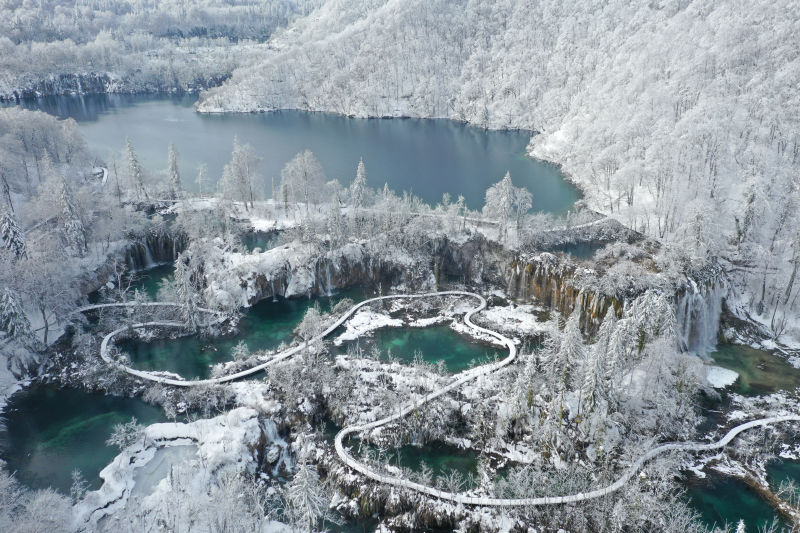Kolan - Cradle of the Pag Cheese
- Vedran Obućina

- Apr 10, 2019
- 4 min read
Updated: Oct 25, 2021
The island of Pag delights with its landscape. From the moment when you get to the Pag ground in the Žigljen ferry port, colours and scenes change: here is a real rock desert, there a green valley; beautiful beaches and old towns on one side replace biblical olive groves and shepherd's huts on the other. Among many places on the island of Pag, Kolan is special as it is not situated on the seashore. It has developed as a green oasis in stone, in the very centre of the island of Pag, and the entrepreneurship of its villagers is evident in 64 family-owned farms! Six of these are dairies because Kolan is recognizable precisely because it is the cradle of the legendary Pag Cheese!
Read more: Pag Cheese - Island of Pag's Wealth

After the last March bura, which also "caresses" the eastern part of the island, and to the rest of Pag it brings salt from the Velebit channel, we headed for the island of cheese and salt. Soon there will be hordes of tourists here, and some will head to an innovative race called "Say Cheese and Run". Exactly on April 6, 2019, a race is being prepared where the participants will run to the Pag beaches and the karst hills, people will haste as bura wind to the blue sea and experience the Pag Island, which is not like other islands. This is what Anđela Paladin from Kolan Municipality says, who is also the creator of this event. And while trying to find out why Pag is not an island like any other, a representative of the Tourist Board of Kolan Ivančica Zubović already exhibits a whole set of gastronomic events in Kolan, which rightly takes a place of the leading culinary destination of the island of Pag.
Read more: Mih - a dairy of the original Pag Cheese

Kolan was first mentioned as a settlement in historical documents in response to the Venetian council's meeting on March 2, 1441. when the Venetian council allowed a settlement to be established in the area called Kolan. From the same year, there is also the parish church in Kolan. In the area k.o. Kolan (in the same borders today's municipality) are partially preserved medieval churches: St. Vitus of 1348, St. Marc 1493, St. Spirit of 1391, St. Mary in 1393 and St. Jerome (end of the 15th century).

Pag is famous for its cheese and lamb. The unquenchable quality of these products has overtaken the heart and palate of genuine gourmet visitors for years. Many of them will be invited to Pag for the Cheese Festival, when besides the cheese they can taste the wines of respectable winemakers from Pag, Dalmatia and the rest of Croatia, and in local restaurants, local chefs create wonders of cooked lamb, mutton goulash, mutton stew and other traditional and somewhat forgotten dishes. This is one of the biggest gastronomic events on Pag, exceptionally well-visited, and all this is a pledge of history and sheep farming, which is the basis of the economy for generations. Today, there are about 35,000 registered sheep on Pag, out of which 20,000 are dairy sheep. This means there is as twice as much sheep on the island than people, who count between 12 and 13 thousand souls. Given that one sheep gives 20 kilograms of cheese a year, it is not difficult to calculate how much cheese is produced on Pag.
Read more: OPG Zubović - the cheese tradition of Kolan

Apart from cheese, various other dairy products find their way into gourmet tables. Among them is curd (skuta), and its significance for the first time will be seen in Mandre, once a fishing village of Kolan and today's favourite summer destination. There will be Skuta Fest at the end of May, where you can try sweet-salt varieties of curd, with herbs, desserts, pancakes, pasta... And there will be proudly presented the products of Kolan’s dairies Gligora, Mih, Zubović, Oštarić, Figurica and Prtorić. Throughout its history, Kolan was primarily a hectic place of farming and sheep husbandry, but the population was also involved in fishing in the nearby places of Mandre and Šimuni. Kolan once used to have its own mine on the territory of Kolanjska polja (Vele grbe and Male grbe), where coal was exploited for many years.

Sport and recreation associated with gastronomy is indeed a real match for Kolan, which is surrounded by many old paths and drywall. Originally built for the purpose of land separation, today these walls are an inevitable part of the tourist attraction in the area of the island. The speciality of the drywall lies in its simplicity - for its construction, only natural stone is used. In Kolanjsko Polje you can see the painstaking work of the ancestors who, through their hard work and patience, built these impressive walls that, besides separating terrains, also serve as a shelter for various animals and plants. In addition to these, one could still see the old grannies dressed in black and shepherd dogs who know almost every sheep in their backyard.
Read more: Giardin Tavern - Taste of Kolan
The whole tradition of Kolan can be harmoniously associated with heritage, music (along Paški tanac, Kolan is also famous for its Glagolitic folk singing) as well as archaeological finds in Kolanjsko polje. Thus, Kolan proved that Pag is indeed an island different from other islands!








Comments